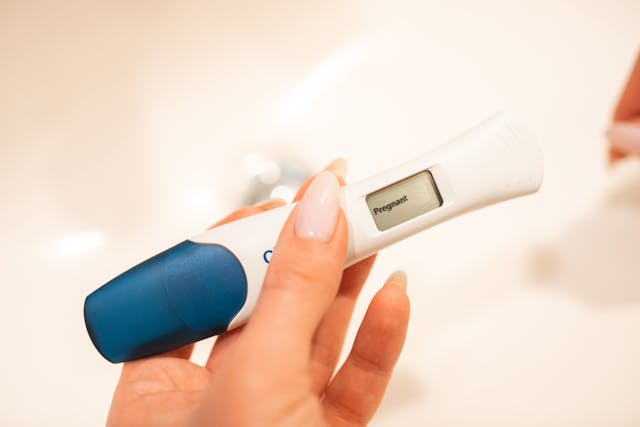Nearing the end of your pregnancy, especially during the 8th and 9th month, you may experience pressure or pain in your pelvic area or deep within your hip joints. This is often referred to as symphysis pubis dysfunction or SPD.
This is a common complaint, affecting as many as 80% of pregnant women at some point during their pregnancy, and happens for a couple of reasons.
What Causes Pelvic Pain During Late Pregnancy?
Nearing the time of birth, your body begins to produce more of a hormone called Relaxin. This hormone helps to relax and loosen the connective tissues in your pelvis and hips to allow room for your baby to be born.
This loosening of the joints can cause your pelvic region to feel sore or unstable. Pelvic pain may also worsen with something called “lightening”. This occurs when the baby engages within the pelvis, putting added pressure on the pelvic region.
During lightening, you may notice that your baby seems lower or has “dropped”. Though this may cause increased discomfort in your joints, you will likely find that you have more room at the top of your belly making it easier to breathe and alleviating heartburn.
Ways to Relieve Pelvic Pain During Pregnancy
There are several things that can help you manage pelvic pain and discomfort during pregnancy.
Many women find that simply remembering to change positions frequently while sitting down or sleeping helps to counter the discomfort. You may wish to experiment with pillows between your legs or behind your back for support.
Staying moderately active each day will also keep your pelvis and hips from becoming too sore. Light prenatal yoga and gentle pelvic stretches and exercises are popular choices for pain management and relief during pregnancy.
A heating pad or a cold pack may also ease your aches and pains. If the pelvic pain is severe and persistent, ask your doctor what pain relief or anti-inflammatory medications are safe for use during your pregnancy.
If the above methods offer you little relief you may also wish to explore other alternatives such as chiropractic care, the use of a maternity belt, or physical therapy. You can discuss these options and more with your primary care provider.
Routine chiropractic care during pregnancy is considered completely safe. All chiropractors are trained to work with pregnant women. Your chiropractor will do an assessment to determine the best chiropractic approach for you.
You may wish to choose a chiropractor who has advanced training in prenatal and peri-natal chiropractic care. If so, ask your chiropractor if he or she is certified in any of the following: DACCP, CACCP, ICPA, or Webster.
Chiropractors specializing in prenatal care can help by removing the nerve interference that might be causing you pain and discomfort. The chiropractor aims to identify the misalignments and imbalances in your spine so that they can help you to feel better. They address your back and pelvic pain to enable you to feel more comfortable during your pregnancy. It could lower the risk of needing an induction or certain interventions when you give birth, and it could help you to be more comfortable after your birth too. Chiropractic treatment can make not just pelvic pain but other aches and pains feel better too. It’s useful in late pregnancy but can also offer more benefits if you start earlier too.
Pelvic Tilts
The pelvic tilt is an exercise that is commonly recommended for pregnant women or anyone wishing to strengthen the muscles that surround and support the lower back, abdomen, and pelvic joints. You may do this exercise lying in bed or on the floor.
Start by bending your knees so that your feet are flat on the floor. Gently rock your pelvis so that the small of your back is flat against the floor and your tummy is flat. Hold this position for five seconds and repeat this exercise a total of five times. You may do this exercise several times a day.





